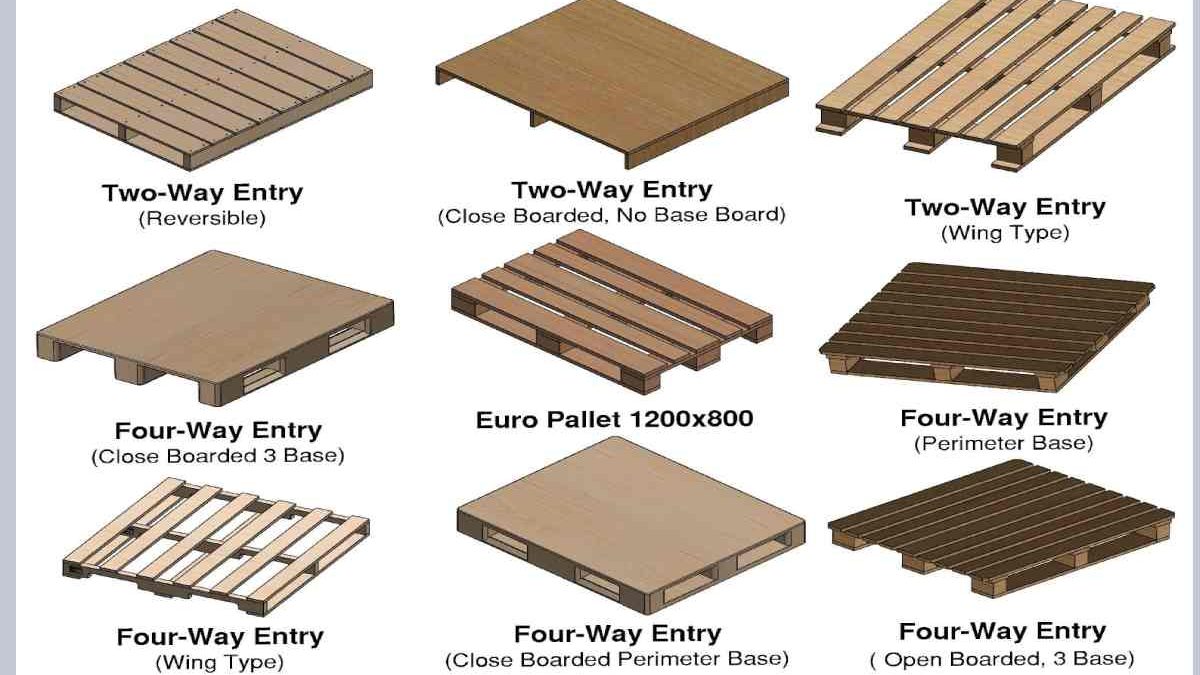Types Of Pallets
The humble and often overlooked pallet plays a crucial role in the safe and efficient transportation of goods across the globe. They’re also called the unsung heroes of the shipping and logistics world.
From wooden to plastic and from standard to custom-made, pallets come in a wide range of types and sizes. Statista estimates the pallet market value will reach over USD$ 95 billion this year and more than USD$ 110.5 billion in 2027.
In this comprehensive guide, we’ll discuss the most common varieties of pallets, helping you understand their unique characteristics, advantages, and applications. So, let’s dive in.
Table of Contents
Choosing The Right Pallet Material
When selecting a pallet, it’s essential to consider the material it’s made from. Each material has advantages and disadvantages, and understanding these can help you make the right choice for your needs.
Consider factors such as your budget, the type of goods you’ll be transporting, and the environmental conditions your pallets will be exposed to when deciding on the material that best suits your requirements.
More importantly, look for providers using high-quality materials and follow industry-standard repair and remanufacturing processes. This ensures that the pallets you receive are safe, durable, and suitable for your specific application. Manufacturers like Challenger Pallet offer a wide range of standard and customized pallets that are either new, repaired, or remanufactured.
Wooden Pallets: The Classic Choice
When you think of pallets, the first image that likely comes to mind is the classic wooden pallet. These sturdy workhorses have been the backbone of the shipping industry for decades. Wooden pallets are typically made from hardwood or softwood lumber, the most common species being oak, pine, and maple.
Wood’s natural strength and durability make these pallets suitable for a wide range of applications, from heavyweight industrial goods to delicate perishables.
Pros
One of the key advantages of wooden pallets is their cost-effectiveness. They’re relatively inexpensive to manufacture and can be easily repaired or refurbished, extending their lifespan. Additionally, wooden pallets are eco-friendly, as they’re biodegradable. Moreover, they can be recycled or repurposed at the end of their useful life. For example, they can be used in building an outdoor playground or extra storage spaces in your home.
Cons
However, it’s important to note that wooden pallets have some drawbacks. These wooden cargo storage helpers are susceptible to moisture damage, which can lead to mold growth and weakening of the structure. They can also harbor pests and bacteria without proper treatment, making them unsuitable for certain industries.
Repaired And Remanufactured Wooden Pallets: Giving New Life to Old Pallets
Repaired and remanufactured pallets offer a cost-effective and environmentally friendly alternative to buying new pallets.
Pallet repair involves fixing minor damages, such as replacing broken boards, reinforcing weakened areas, or removing protruding nails. This process reduces the need for new pallet production and minimizes waste.
Remanufactured pallets, on the other hand, undergo a more extensive process. They are disassembled, and the individual components are inspected for quality and structural integrity. Damaged components are replaced with new or recycled parts, and the pallet is reassembled to meet the original specifications. This process creates a new pallet from the materials of old ones, offering a sustainable solution without compromising on quality.
Plastic Pallets: The Modern Alternative
In recent years, plastic pallets have gained popularity as a modern alternative to their wooden counterparts. Made from high-density polyethylene (HDPE) or polypropylene (PP), plastic {pallets} offer several advantages.
Pros
Plastic {pallets} are lightweight, durable, and resistant to moisture, chemicals, and pests. This makes them ideal for industries with strict hygiene requirements, such as food processing and healthcare.
These tools also offer greater consistency in terms of size and weight, as they are manufactured using precision molds. This uniformity can benefit automated handling systems and help optimize space utilization in storage and transportation.
Cons
One of the main drawbacks of plastic {pallets} is their higher initial cost compared to wooden {pallets}. However, their longer lifespan and reduced maintenance requirements can offset this cost over time. Additionally, plastic {pallets} are recyclable.
Metal Pallets: The Heavy-Duty Solution
Metal {pallets are the go-to choice when handling heavy loads and extreme conditions. These {pallets} are typically made from steel or aluminum, offering unparalleled strength and durability.
Pros
Metal {pallets} can withstand high temperatures, chemical exposure, and rough handling, making them suitable for automotive, aerospace, and construction industries.
They also provide excellent fire resistance, which is a critical consideration for certain applications, such as storing and transporting flammable materials. They’re easy to clean and sanitize, making them suitable for hygienic environments.

